Home » Articles posted by Tessa Sanderson (Page 16)
Author Archives: Tessa Sanderson
Case Unleashes Industry’s Largest Compact Track Loader, the TV620B
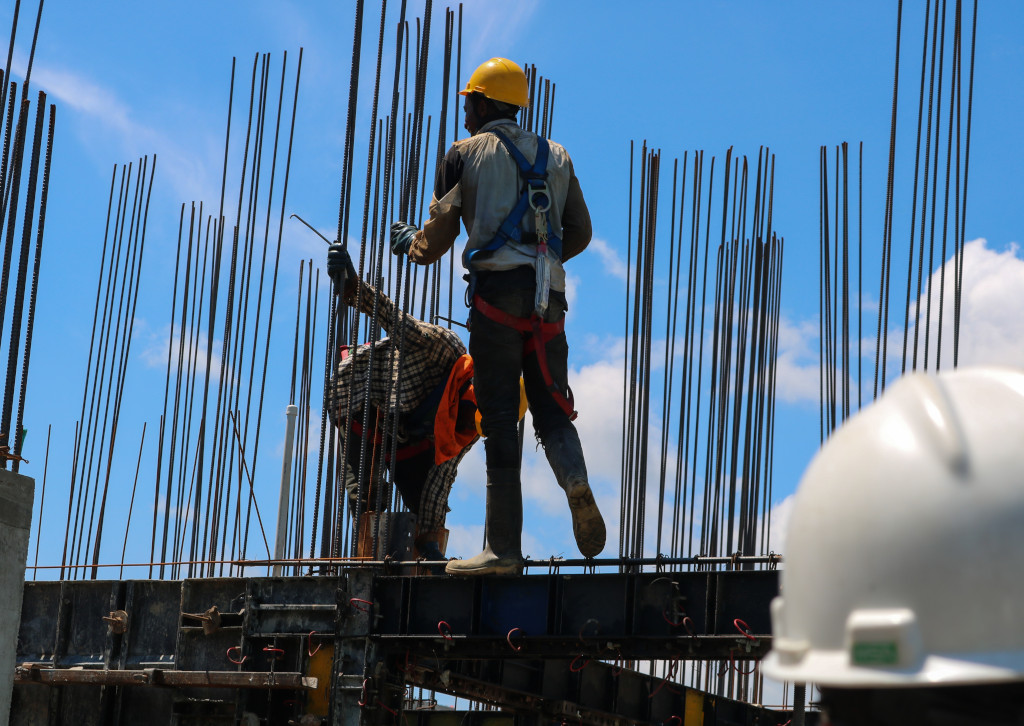
With an operating capacity of 16,100 pounds, Case’s newest compact track loader is now the largest in the industry, designed for size and power for residential construction and land clearing. The company unveiled its new CTL at The Utility Expo in Louisville, Kentucky.
Powered by a 114-horsepower engine, the TV620B provides 12,907 pounds of loader breakout force and 12,907 pounds of bucket breakout force. It has a rated operating capacity of 6,200 pounds.
Built on an extra-large frame, Case says, the TV620B isn’t just the big brother of the TV450; the machine was redesigned from the ground up.
“We talked to a lot of customers who were running larger CTLs and asked them what they’d like to see,” said George MacIntryre, product manager, Case. “We really focused on certain areas making sure that the frame was robust and could stand up to harsh conditions. A piston pump comes standard on this model giving customers the flow and pressure ratings they need to run big attachments. Lastly, we focused on the performance of the loader to be able to dump into high-sided trucks.”
More features now come standard on the TV620B, including:
Electro-hydraulic controlsHigh-flow hydraulicsAutomatic Ride Control and one-way self-levelingA programmable hydraulically reversing fanLED lightsThe new SiteConnect ModuleOne year of Case SiteWatch telematics
Electro-hydraulic controls allow the operator to set total machine responsiveness to low, moderate or aggressive, or independently set tilt, lift and drive speed, as well as loader arm and drive control to adjust to the demands of the job. This is set through the LCD multi-function display in the cab, which also comes standard, Case says.
“We are giving the operator more precise and intuitive control than they’ve ever had in a Case CTL and making the machine as simple to operate for as broad a range of applications as possible,” said MacIntyre.
High-flow auxiliary hydraulics and enhanced high-flow hydraulics are available options, delivering 3,450 psi and 4,100 psi, respectively, at 41.6 gallons per minute, making mulching heads, cold planers and grading blades ideal companions for this machine. An enhanced hydraulic cooling system maximizes uptime when using high-powered attachments. The TV620B also offers a selection of buckets, including a heavy-duty 84-inch, 1.25-cubic-yard bucket with SmartFit teeth.
One-way self-leveling and automatic ride control with adjustable speed settings reduce material spillage and deliver a smoother ride. Operators can adjust the foot pedal to serve one of three functions — accelerator (traditional acceleration), trans (reduces drive speed but retains rpm for loader arm functions), or decel (traditional deceleration).
The beefed-up undercarriage on the TV620B takes a nod from Case’s 650M dozer. “It’s much heavier-duty than the size class down from this,” said MacIntyre. “The idler ceiling on the TV620B is similar to the 650M dozer. The dozer components are a little bit larger than what we have on the CTL, but it’s really just a downsized version of what we have on the very reliable Case dozers.” Additionally, the 17.7-inch rubber tracks allow for minimal ground disturbance (6.1 psi) and enhanced performance on improved surfaces.
With a maximum dump height of 39 inches and 140.2-inch hinge pin height, the machine is well-suited for loading trucks. But MacIntyre says the loader arms will also look different from previous Case models. “We’ve gone to a straight-in-line loader arm linkage, giving great visibility down to the coupler and bucket area. It also allows the cab to be tipped forward with the loader arms in the down position to get even better access to all the components that are underneath the cab.”
Inside the cab, the TV620B features 360-degree visibility and an 8-inch split-screen display that simultaneously shows both the rearview camera and equipment information. A cab-wide rearview mirror gives visibility to the back of the machine. Large windows provide visibility to the front of the machine down to the attachments and optimal sight lines to the sides and rear of the machine.
Ground-level maintenance points allow for easy access to critical components. “The rear of the machine features an extra-large engine compartment so the components are easily accessible for daily checks,” said MacIntyre. “Our battery is located in a separate panel with the battery and master disconnect switch. It’s very easy to access – you don’t need to open up the rear hood for that.”
A combination of cooled exhaust gas recirculation (CEGR), diesel oxidation catalyst (DOC) and selective catalytic reduction (SCR) technologies enables the machine to meet emissions standards. The TV620B features no diesel particulate filter (DPF) and requires no regeneration, reducing downtime. An adjustable hydraulically reversing fan minimizes the buildup of debris in the engine compartment.
Production of the TV620B is underway, and customers can expect to see it at dealers in Q4 2021.
Quick Specs
Operating Weight: 16,100 pounds
Engine Horsepower: 114
Rated Operating Capacity (50 percent tipping load): 6,200 pounds
Rated Operating Capacity (35 percent tipping load): 4,340 pounds
Hinge Pin Height: 140.2 inches
Reach at Maximum Dump Height: 39 inches
Loader Breakout Force: 12,084 pounds
Bucket Breakout Force: 12,907 pounds
High-Flow Auxiliary Hydraulics: 41.6 gallons per minute at 3,450 psi; 83.7 hydraulic horsepower
Enhanced High-Flow Auxiliary Hydraulics: 41.6 gallons per minute at 4,100 psi; 99.5 hydraulic horsepower
Did you miss our previous article…
https://constructionosa.org/?p=444
List: Construction & Building Simulator Games | ONE-KEY Blog
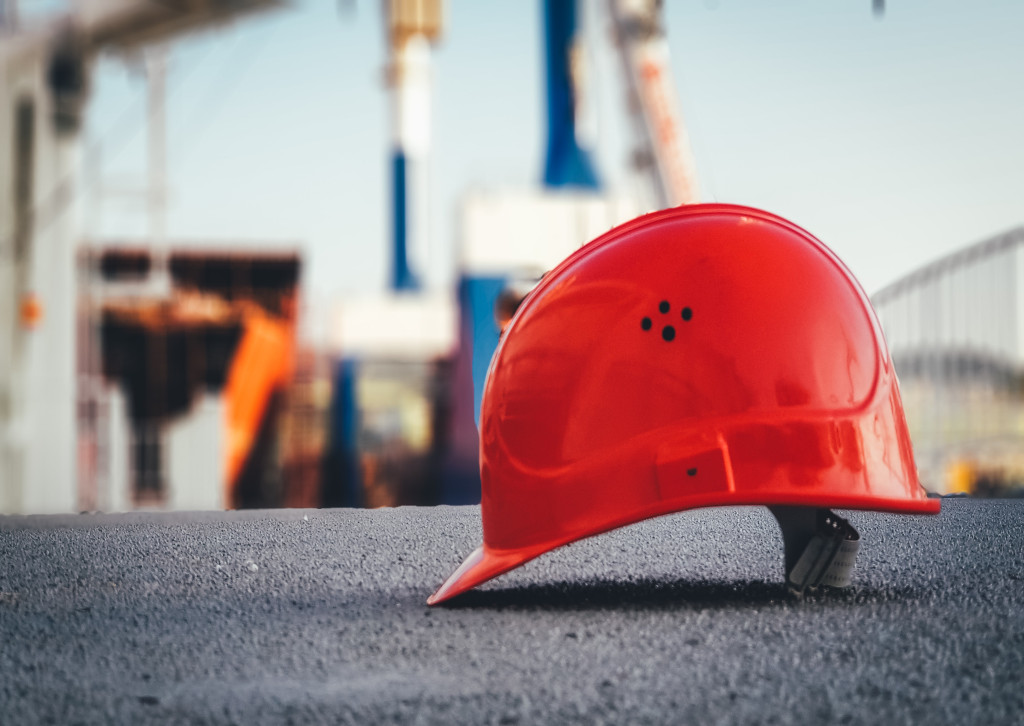
In this publication, when it comes to construction design, we typically discuss innovative approaches like design-build, prefabricated construction, and lean construction principles, among other topics.
![]()
Did you miss our previous article…
https://constructionosa.org/?p=440
JKSSB Recruitment 2021 for Various Posts | 462 Posts | 09-11-2021
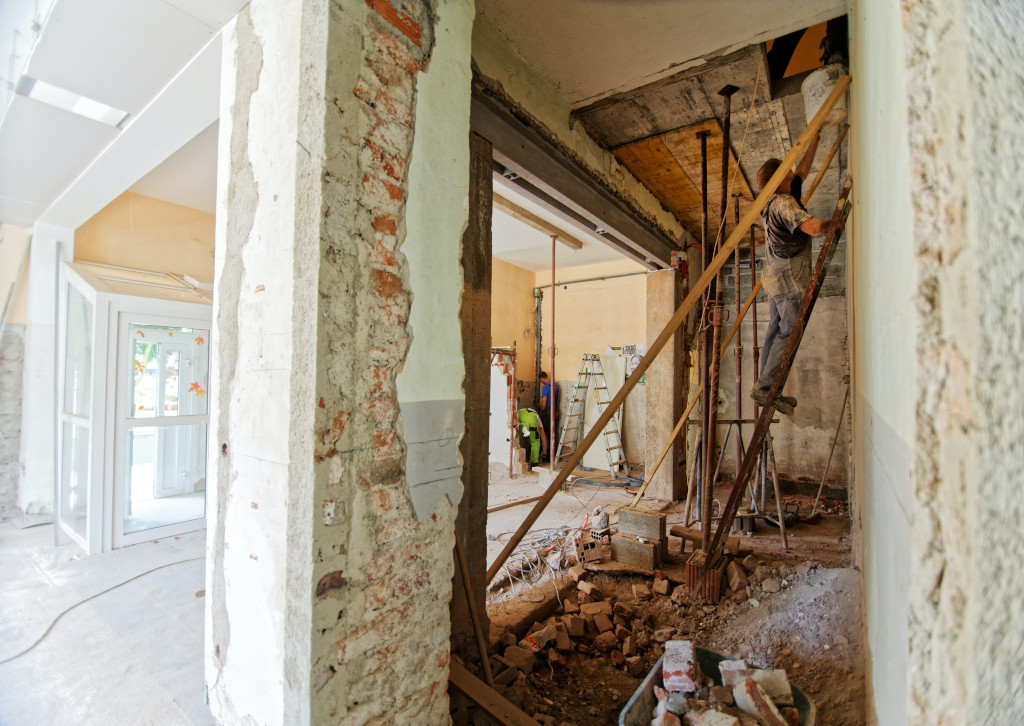
JKSSB Recruitment 2021 for Various Posts with 462 Posts vacancies, last date to apply is 09-11-2021, apply soon
The post JKSSB Recruitment 2021 for Various Posts | 462 Posts | 09-11-2021 appeared first on ConstructionPlacements.
APPSC Recruitment 2021 for Assistant Director | 06 Posts | 12-11-2021
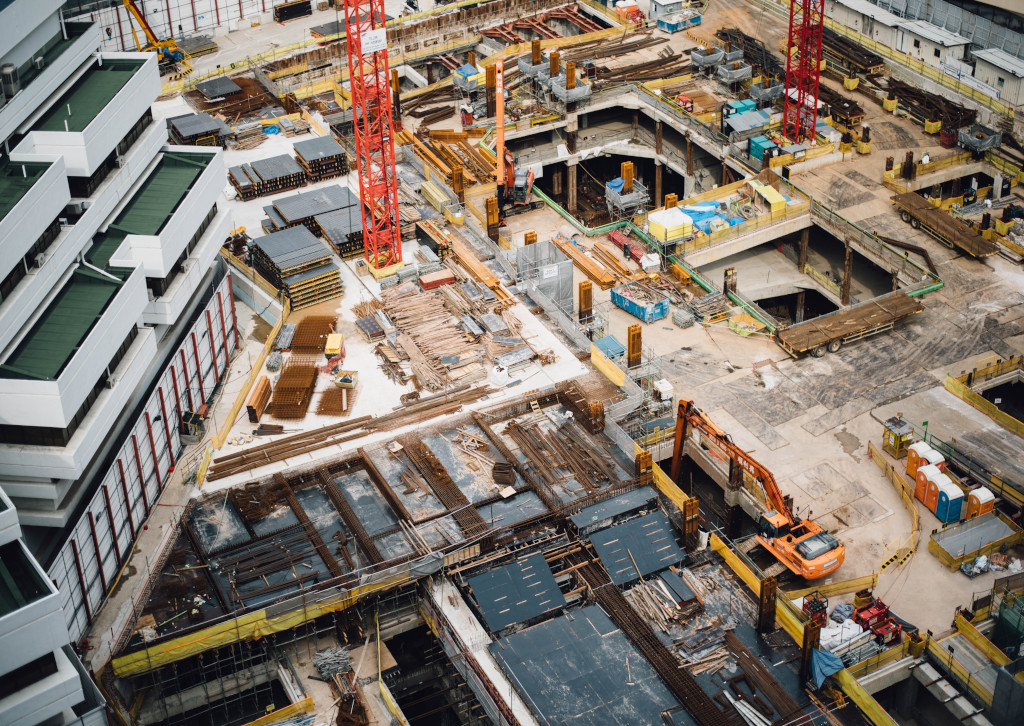
APPSC Recruitment 2021 for the post-Assistant Director with 06 Posts vacancies, last date to apply is 12-11-2021
The post APPSC Recruitment 2021 for Assistant Director | 06 Posts | 12-11-2021 appeared first on ConstructionPlacements.
Did you miss our previous article…
https://constructionosa.org/?p=434
Product Roundup: Deere’s 470G LC Excavator Gets SmartGrade
The John Deere 470G LC excavator will now offer a full range of grade management solutions including SmartGrade, SmartGrade-Ready with 2D, 3D Grade Guidance and 2D Grade Guidance.
Factory-installed and calibrated from the dealer, the 3D grade control system automates the position of the bucket as you dig, resulting in accurate dimensioned trenches and contour work. That means you only move the dirt once. You don’t have to compact dirt that has been over-excavated, and in many cases, you can eliminate or greatly reduce the time and work done by finishing machines such as dozers and motor graders.
In addition to SmartGrade technology, the 470G LC model features various precision technologies including Virtual Front, Over-dig Protect, Virtual Ceiling, Virtual Floor, Virtual Swing and Virtual Wall. Upgrade kits for Deere’s SmartGrade technology can be installed onto equipment at later dates to match contractors’ changing needs.
Everything’s going autonomous – even Komatsu’s water truck

Komatsu’s HD785-7 autonomous water truck drives itself and remembers how much water to put down.Komatsu
Komatsu has been field testing an autonomous water truck, based on its proven Autonomous Haulage System (AHS). The technology on the concept HD785-7 truck autonomously controls the truck’s movement and water distribution through the same platform.The company hopes to introduce the HD785-based autonomous water truck in 2022.
Komatsu’s AHS enables the water truck to travel autonomously on a pre-defined haul road and work cooperatively with other autonomous trucks and staffed equipment. The system controls the amount of water dispersed, according to the vehicle speed and haul road incline, and also “remembers” the watering history to avoid overwatering.
Trackunit, ZTR join forces to make telematics data easier to use
Machine data is of little value unless you know what to do with it. In other words, it has to be “actionable.” That’s the idea driving the merger of Trackunit and the Industrial IoT (Internet of Things) division of ZTR. The two companies are uniting to accelerate innovation and drive digital transformation — with collaboration and service at the center of their strategy.
After the transaction closes, the combined entity will help customers collect data and translate it into actionable results that enhance utilization, increase fleet availability, improve safety and reduce equipment loss.
Trackunit is an SaaS-based IoT solution that collects and analyzes machine data in real-time to deliver proactive and predictive information to customers. ZTR develops IoT solutions using telematics that allow companies to remotely monitor and manage mobile as well as fixed assets.
In making the announcement, company executives noted that the realm of IoT and telematics has evolved from simple track and trace technology into actionable insights that create value.
“We see the industry at a pivotal turning point when it comes to digitalization of their business and equipment, and customers are looking for a trusted partner,” says Soeren Brogaard, CEO of Trackunit. “By combining our businesses, we’re elevating our technology and increasing the value customers will be able to extract from their data.”
Did you miss our previous article…
https://constructionosa.org/?p=431
Nature and Design: 10 Ways to Bring Nature Indoors

Here are a few ways that you can bring nature indoors, and design a space that would please even mother nature!
The post Nature and Design: 10 Ways to Bring Nature Indoors appeared first on ConstructionPlacements.
Did you miss our previous article…
https://constructionosa.org/?p=428
How Artificial Intelligence Can Keep Your Workers Safe, Reduce Insurance Costs

Increasing amounts of digital data are being collected on construction sites. Analyzing that information can help contractors understand and predict risk in project delivery – one of the largest risk factors being safety.
Fatality and total incident rates in the construction industry have plateaued for the last 10 years, but a partnership between Newmetrix and StructionSite aims to improve those rates using artificial intelligence (AI).
Newmetrix is a construction technology company that uses AI and advanced analytics to reduce safety risk. StructionSite is a photo and video site documentation app that enables contractors to track project progress. The integration allows StructionSite users to get enhanced data from the 360 jobsite videos and images they are already collecting on the app.
Newmetrix’s platform automatically pulls image and video data from StructionSite. The platform’s AI, “Vinnie,” then analyzes the images to identify more than 100 safety risks, such as work at height, housekeeping, improper ergonomics.
Using predictive analytics, Vinnie combines the image data with other project data to determine the level of safety risk for each project and predicts which 20% of the projects will be responsible for 80% of the risk. Construction companies can use this data to focus their safety efforts on the projects where they will have the most impact.
“Newmetrix has been analyzing StructionSite images from our projects for 18 months,” said Takashi Tsuchiya, deputy section manager at Obayashi Construction. “So far the Safety AI has generated over 1.2 million tags that our safety and project teams can use as opportunities for conversation. As a specific example, over 9,500 examples of housekeeping and 4,500 examples of standing water were identified by the Safety AI. This increases the number of relevant conversations we can have about safety and helps prioritize the teams’ actions. The integration boosts the number of images to generate more tags.”
By integrating Newmetrix and StructionSite, construction companies can:
Use the visual documentation that’s already being collected to create opportunities for safety engagement and to predict safety risksPrevent safety issues before they ariseProtect profitability with lower recordable incident rates and fewer claimsUse a predictive-based safety program to negotiate a better insurance rate
Figuring out what to do with the vast amounts of incoming data from construction sites can be overwhelming, but technology can help contractors make better decisions faster and prevent incidents before they occur.
Did you miss our previous article…
https://constructionosa.org/?p=425
Dozers Decked Out with Tech: Pushing Dirt is Getting Easier
The market is full of new dozers and those new dozers are full of new technology.
The new tech includes increased automation features to make the machines easier to operate.
“One of the biggest struggles facing contractors today is finding and retaining skilled operators,” says Matt Goedert, solutions marketing manager, John Deere. “John Deere is developing several features to help overcome this challenge.”
Manufacturers have also focused on improved design to make their dozers quieter, more comfortable and with increased operator visibility.
Cat improved forward visibility up to 30% on its newest model, the D4. Visibility is especially improved to the top of the blade and the area in front of it. The company lowered the hood line and relocated components that could impede sight.
“The D4 is the smallest of Cat’s mid-size dozers,” says Sam Meeker, market professional, Cat. “Visibility is especially important in applications where this size class is typically found, where obstacles and workers are common on site.”
Here’s a look at the latest dozers and their new technology and design features:
New and improved
The D4 started last year as a rebadged D6K. This was done to align the machine with Cat’s revised machine model naming protocol and to fill a numeric gap in D Series dozers.
The current D4, however, is truly a new machine and has been available since the second quarter of this year.

The Cat D4 is powered by a Cat C4.4 engine rated at 130 net horsepower. Operating weight is 29,259 pounds in non-LGP with 22-inch shoes, and 30,882 pounds in LGP with 30-inch shoes. Blade capacities are 4.26 cubic yards non-LGP and 4.98 cubic yards LGP. Foldable blades are available for both and have the same capacities as the standard VPAT blades.CaterpillarThe rearview camera is integrated into the new 10-inch color touchscreen. The view can be on only during reverse travel or can be left on all the time. In the latter case, the camera view occupies about one-fourth of the screen and is surrounded by operating data. All Next Gen Cat dozers share the same screen layout to help with familiarity.
The D4 has all the machine control options Cat offers on its dozers, including Cat Grade with 3D and the ability to install systems from Topcon, Trimble and Leica. A Waste package includes guarded rear lights, double-skinned fuel and hydraulic tanks, final drive guard and air pre-cleaner.
The HD package is ideal for forestry, demolition and other high-demand applications. It has additional underbelly guards; additional sweeps, sealing and screening to keep out dust and debris; a reversing fan and heavy-duty fenders. Standard and low ground pressure (LGP) versions are available.
A variable pitch angle tilt (VPAT) blade is standard. Blade options include power pitch for more aggressive cutting, and folding blades that bring the blade within the width of the tracks (under 93.3 inches for standard pitch and under 110.8 inches for LGP).

Liebherr offers six models of Generation 8 dozers, from the PR 716 G8 (132 horsepower, 29,231 pounds, 3.82-cubic-yard blade) to the PR 766 G8 (422 horsepower, 119,784 pounds, 22.23-cubic-yard blade). Available operator assist features include Free Grade blade stabilization, Definition Grade for 2D grading, and 3D Grade from Topcon for modeling complex terrain.Liebherr
Liebherr offers Generation 8 models of six dozers, from the 132-horsepower PR 716 G8 to the 422-horsepower PR 766 G8.
The five small and mid-size models come standard with 1D and 2D Liebherr Operator Assist Systems. 1D provides active blade stabilization for free grading; 2D provides active blade positioning for grading to longitudinal and cross slope specs.
3D Grade is an available option and has roof-mounted Topcon 3D Machine Control for complex 3D models. Ready kits, consisting of mounting and cabling, are available for customers using Trimble or Leica systems.
The large PR 766 G8 features Liebherr’s Delta High Drive as well as an oscillating idler and double bogie suspension for improved traction and comfort in mining and other production applications.
Liebherr Silent Design resulted in the company’s quietest dozers, thanks to noise-attenuating changes in cab mounting, hydraulics and drive systems on Generation 8 models.
Electronic pilot controls on the small- and mid-size models allow the operator to tailor response and speed of front and rear equipment and includes blade shake, rear ripper parking positioning and automatic blade lifting when reversing.
The LiDAT on Liebherr Generation 8 dozers has more sensors and greater data management capacity, helping ensure compatibility with current and future site management systems. All G8 models use common-rail diesel engines designed and built by Liebherr.
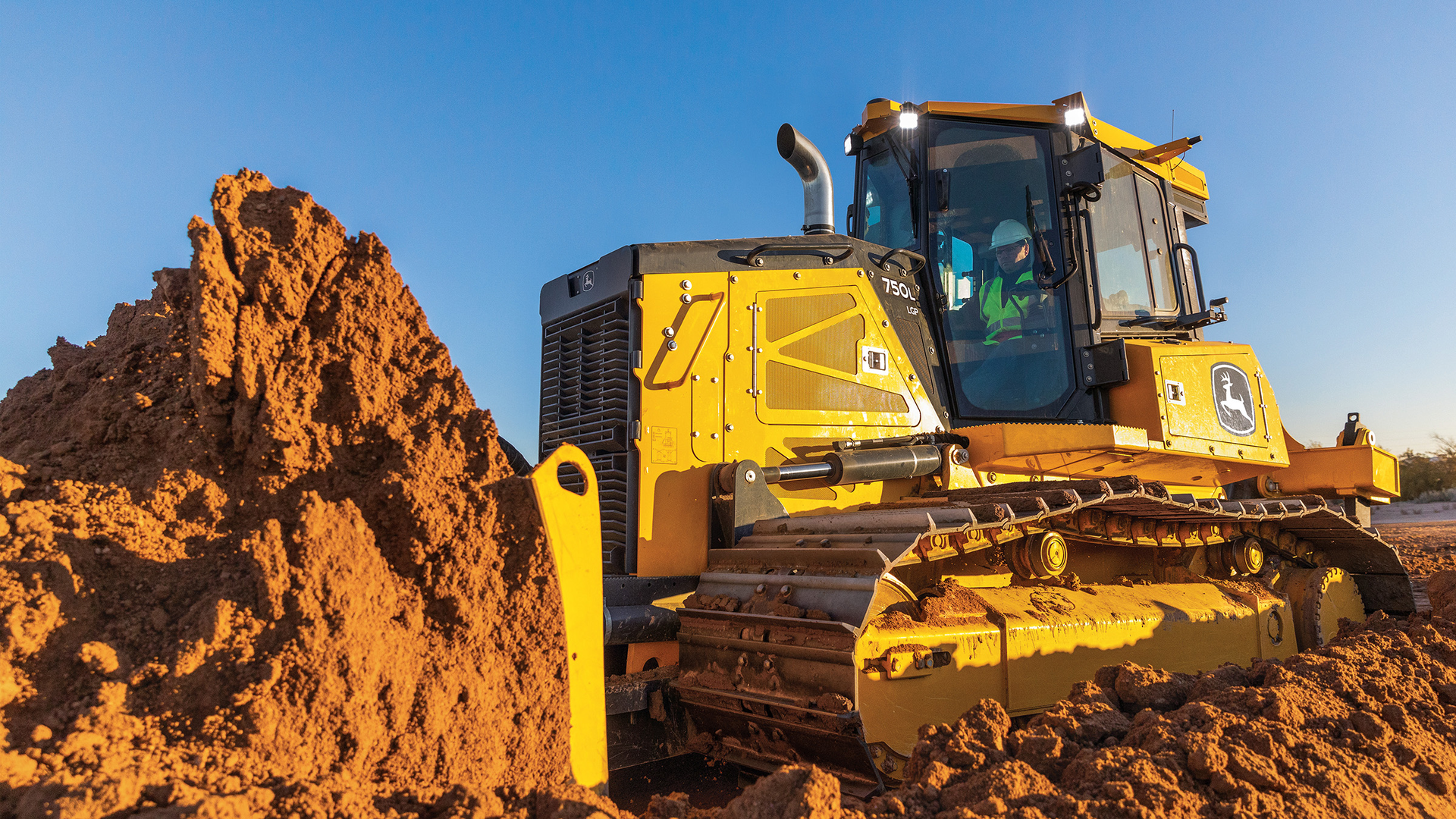
The John Deere 750L has a Deere PowerTech PVS 6068 engine rated at 131 net horsepower. Operating weight is 38,330 pounds. Blade capacity is 5.6 cubic yards. The dozer has hydrostatic drive with triple reduction final drive. The standard track has 40 shoes with a 7.5-inch pitch and single grousers designed for moderate service. Standard blade width is 129 inches; a 161-inch wide blade is optional.John Deere
Released in mid-2020, the 700L and 750L expand the L Series catalog for John Deere. The first was the 850L, released in 2019.
Features of the L Series include larger, more comfortable operator stations. Noise has been reduced more than half in the 700L compared to the 700K. Heated and ventilated premium seating and automatic temperature control are optional.
Horsepower and operating weight have been increased. An optional 161-inch blade is now available for the 750L. Hydraulic hose and electrical harness routing has been improved to reduce potential rub points, and hydraulic hose length on the 700L and 750L has been reduced 20%.

Komatsu’s D71PXiKomatsu
The D71-24 is Komatsu’s newest dozer. It is available with or without the company’s new iMC 2.0 intelligent Machine Control. All are powered by Komatsu SAA6D114E-6 engines rated at 237 net horsepower.
The D71 is Komatsu’s largest hydrostatic-drive dozer. Track options include 24-, 30- and 36-inch widths with blade capacities of 5.8 to 6.1 cubic yards.
“The D71 was a clean-sheet design,” says Andrew Earing, senior product manager, Komatsu. “The hydrostatic drive and standard PAT blade of the D71 make it a very nimble and versatile dozer.”
Other standard features include heated and ventilated seating, LED work lights and three-speed blade drop to shed sticky materials. Fast steering mode slows the inside track but also accelerates the outside track for tighter, faster turns while still allowing counter-rotation.
In a previous interview with Equipment World, LiuGong indicated its revamped Dressta dozers were scheduled for a fall launch. We have no additional information at this time.
Grade control technology
Deere has launched Slope Control on several dozer models in recent years, filling a need for less complex technology that doesn’t use a 3D model or external reference, such as a base station or laser.
“While adoption of 3D grade control systems has been significant over the past five or more years,” says Goedert. “There is still a place for entry-level grade control technology to grow adoption and simplify tasks.”
Slope Control automatically controls the blade, is designed to be simple to use and offers two operating modes, joystick and target. This entry-level system can be upgraded to Deere SmartGrade advanced 3D grade control at any time. SmartGrade performance responds to multiple inputs, including load levels, material types and dozing activities.

Case factory-fit machine control from Leica is available on 750M through 2050M dozers. Multiple levels of control are also available. For customers with six-way (PAT) blades working in extreme conditions, the iCON grade MCP80SP adds SP sensor technology and dual blade-mounted GNSS antennas for speed and accuracy.Case CE
Case announced in March the availability of its factory-fit machine control option on 750M through 2050M dozers. Packages include Leica Co-Pilot, 2D and dual-mast 3D systems. The factory installation includes calibration using Case World Class Manufacturing processes so the dozer arrives at the dealership ready for immediate use.
Jeremy Dulak, product manager for dozers, cites several advantages to the factory-fit approach. “The first is simplified ordering. Working with your Case dealer, you can group the Leica system that best fits your operation in with the purchase of the machine.” This allows a single payment, a single financing package, a single approval and a single interest rate.
Factory fit also ensures that when the machine arrives at the dealer, “it’s ready to go after just a very quick calibration.” And factory fit preserves residual value, he adds, because “the second owner will have confidence knowing the system was purpose-built to that specific machine and meets all quality and performance standards intended by the manufacturer.”
Komatsu’s iMC 2.0 offers “grass-to-grade automation,” says Earing. Most systems focus on grading; iMC 2.0 adds automated lift control for the fill process. This dramatically aids compaction and reduces the likelihood of costly rework by allowing each layer to be compacted before the next layer is lain.
Komatsu says iMC 2.0 brings performance to a level that is 96% equivalent to that of an experienced operator, which elevates the performance of lesser-skilled operators. Seasoned operators also benefit from iMC 2.0 because it will maintain settings they create, a feature Komatsu calls “operator-guided automation.”
Each Komatsu dealership has a technical service expert to help train customers on iMC 2.0. TSEs also help with the installation of systems from Topcon, Trimble and Leica.
Did you miss our previous article…
https://constructionosa.org/?p=418
Environmentally Friendly Tips to Consider When Moving To a New Home

Moving to a new home is an exciting process. However, the one thing that most people don’t think about is the environmental impact of moving.
The post Environmentally Friendly Tips to Consider When Moving To a New Home appeared first on ConstructionPlacements.
Did you miss our previous article…
https://constructionosa.org/?p=415
How to Solve Your Construction Labor Shortage
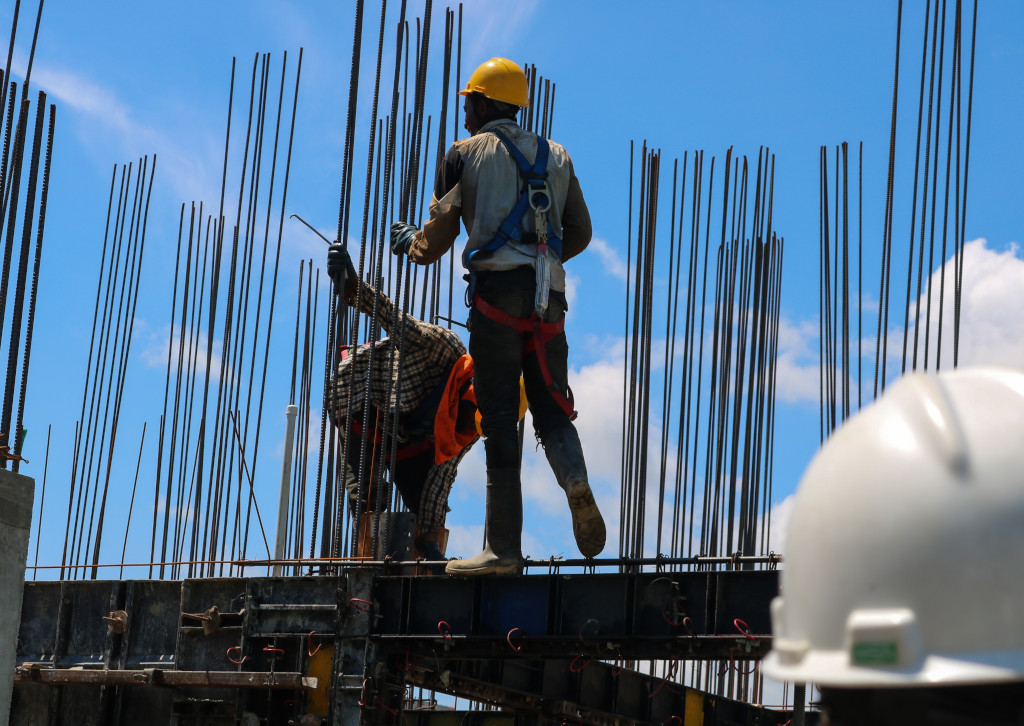
Still looking for the proverbial easy button to fill your talent pipeline? We hate to break it to you: there isn’t one.
“If you’re in this industry and not being the biggest promoter of it, you’re part of the problem,” says Benjamin Holmgren, president of Buildwitt Jobs. “You’re not going to solve it for the industry. Solve it for you.”
Holmgren was joined by Natasha Sherwood, executive director of the Independent Electrical Contractors Florida West Coast Chapter, and Steve Cona III, president and CEO of the Associated Builders and Contractors Florida Gulf Coast Chapter, in a recent panel discussion led by Autumn Sullivan, director of marketing and experience for Mobilization Funding.
The panel explored the issue of why skilled trade workers are leaving the industry, the impact of culture on recruitment and retention, and what companies can do to increase their talent pipeline.
Recruiting and retaining the next generation
So, can everyone stop blaming millennials already? Continuing to drone on about how millennials lack worth ethic is so 2010. Older millennials, those born in the 1980s, are established and in positions of power in their careers. Where the industry needs to focus its attention is Gen Z and Gen Alpha.
“I don’t believe it’s so much a labor shortage, as a shortage of leaders who know how to lead the next generation,” said Holmgren. “Kids my age want to have a mission to get behind. They want to have a vision. They want to be led, trained and developed.”
The companies that have solved this understand this workforce development crisis is not about millennials. “Taking ownership of solving this for your company is the elixir,” said Holmgren.
Shop class makes its comeback
Getting in front of Gen Z and Gen Alpha starts in school. Trade education in middle school and high school was nearly extinct but is slowly making a comeback. Until there is wider support for the curriculum at a state and district level, getting involved at an individual level is critical.
Construction companies can help through apprenticeships and mentor programs. Contractors involved in mentorship see better hiring success because they already have name recognition with students, panelists said.
“The greatest benefit to our industry would be a solid pipeline out of high school and into the trades,” said Cona. “It has to be a statewide effort in our educational system to promote opportunities in all occupations that don’t necessarily require a four-year degree. The average age of our apprentice is 26-27 years old, and we have to get that lower to 21-22 years old. It can’t be an afterthought.”
Outside of local efforts, Holmgren suggests meeting the younger generation where they are online.
“It’s one thing to put on a trade show or job fair, but what about Instagram? TikTok? One thing you can start doing today is using social media to tell the story of your business and show people what it’s really like to work in your industry. It’s not that you have to make it look cool; the trades are already cool. Come join us – that’s what we need to be telling people.”
Work culture in construction
Taking ownership of the construction recruitment and retention problem also means taking a hard look at company culture. For better or worse, every company has a culture. How that culture has evolved depends on how it is emulated and nurtured daily.
Work culture has been cited as a major factor in many skilled-trade veterans leaving their employer or the industry entirely. While culture is a hot topic in the construction industry, and often framed as something only young people are pushing for, it has a significant impact on retention across the board.
“You can tell that no matter the age of the employee, they are all looking for a culture that has a family atmosphere, opportunities for advancement, flexible hours and good benefits,” said Sherwood. “I just helped a fourth-year apprentice graduate who had an opportunity to go anywhere. He took a job at a company that paid $2 less an hour because it was a good fit. There’s that level of appreciation that is sometimes more important than the dollar bottom line.”
lternative talent pipelines
Beyond young people, there are many other viable talent pools and untapped markets to help fill the skilled-worker pipeline. Correctional institutions, foster care systems and the military are just a few options.
“We’re looking for all sorts of avenues to fill that pipeline, and one of those is folks coming out of corrections,” said Cona. “We’re getting asked by state leaders and politicians to work with them to help develop skills while people are still incarcerated. So whenever they get out, they can get plugged back into society. If you can give people opportunities and jobs when they get out of being incarcerated, their chances of going back are very slim.”
“The military does a great job recruiting kids, with ROTC officers and billboard campaigns,” said Sullivan. “The trades need to be seen as a viable option. You can feed your family, you can travel around the country – there’s a lot of opportunity depending on where you want to go with it.”
Continuing education for retention
While there are required continuing education credits in the construction industry, employers should also consider training that provides employees with a path toward a goal they value, such as moving from apprentice to superintendent.
“In this day and age in this economy, you have to invest in training your workforce. There are no unemployed electricians and plumbers sitting on the sideline,” said Cona. “You have to build your pipeline by investing in people who might not necessarily have the skills that you need at that time. Invest in your employees, train them, put them in apprenticeship programs and maintain it through their lifecycle as an employee.”
An engaged employee is someone who stays with you.
Changing the narrative
While the narrative that construction is a dead-end job is a systemic problem, individual companies can start making strides today to reframe the conversation and illuminate the opportunities.
“This country was built because people learned skills, created things and built things. No one can say this country was built because people went to college. That’s what we need to continue to push,” said Cona. “As parents, as an industry, we need to be better at pushing the narrative that this is a viable option.”
“Don’t people get tired of talking about finding good help?” adds Holmgren. “We know you can’t find good help. Do something.”
“I’m not interested in solving the industry’s labor-shortage challenge, but if there is one person who can take something from this and it lights a spark and they can solve it for them, that’s a win.”
Watch the full webinar here.
Did you miss our previous article…
https://constructionosa.org/?p=412